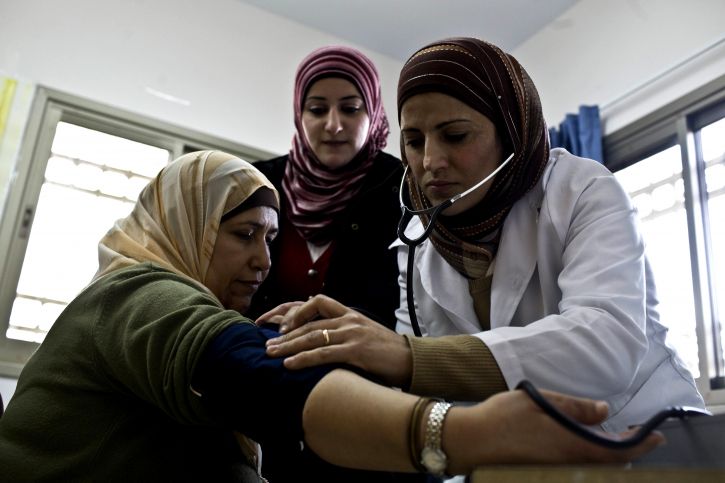Solver Alia Rasoully, President of WISE Afghanistan, is uplifting women in Afghanistan by providing access to education and healthcare.
Afghanistan has one of the highest maternal mortality rates in the world. Every 27 minutes a woman in Afghanistan dies due to childbirth, with a 75 percent chance that the newborn also dies, according to Afghanistan’s Ministry of Public Health. Rasoully’s goal was to help healthcare facilities leverage technology to effectively communicate with neonatal patients and collect patient data and information. This led to the creation of the first maternal health app in Afghanistan: Salamat.
Why did you start WISE Afghanistan?
My family is originally from Afghanistan, and I am from an area where the majority of girls don’t even have the opportunity to obtain a primary education. I grew up knowing girls my age, my own cousins, who did not have the opportunities I had and that died back home from preventable women’s health issues, especially maternal health-related problems.
While studying biomedical engineering in college, my friend and I started an organization running medical brigades in different countries, and I really wanted to complete one in Afghanistan. After working very hard to convince my parents, I was finally able to visit during my senior year in college. Once I saw what women and children were going through there, I said, “If I don’t do something about this, I will feel guilty for the rest of my life—because this could have been me.” That’s how I started WISE.
Now, over seven years later, WISE has provided over 15,000 women with access to healthcare and educational resources. We run our own educational center for women and girls who have not gone to school in the past and in the area where my family is from.
How did you come up with the idea for Salamat?
A core component of our healthcare initiatives with WISE is to support existing healthcare facilities with resources, medicine, and capacity development. I noticed these doctors were so overworked, understaffed, and overburdened. I even saw women giving birth on the floor. I thought there had to be a way to make the lives of these doctors easier so that they could provide higher quality care. Even though our mission is to help women, the way we can help women is through the doctors.
By working with the Ministry of Health, I knew that they had created a health management information system, and they had been trying for years to do something digitally, but they were not successful. And because my background is in innovation and technology, I decided to create an app that could help doctors.
What challenges have you faced in creating Salamat and how have you overcome them?
There is a reason why a maternal health app has not yet existed in Afghanistan—there are just so many challenges. First, if there is no medicine on the shelves, does it make sense to give doctors an iPad or tablet? Are they ready for that? But I believe that technology does not always have to be too fancy or high-end. We designed the app based on the community’s needs and what they’re ready for, which is why a human-design centered approach is so important. There is no need for the internet and we want to empower the providers so that they can use the app themselves. This will also help with the sustainability and scaling of Salamat.
Another challenge is the illiteracy of women. There is so much information developed on maternal health, but a lot of it sits on shelves and doesn’t reach those women who need it. Instead, we want to get this educational material to these women in an innovative way by leveraging the high use of telecommunications in Afghanistan, since over 80 percent of the population have access to a phone.
What was your favorite part of being a 2020 Solver?
Through Solve, I was introduced to mentors and coaches that really helped me work through some of our challenges. These experts in their field gave me one-on-one support, and I felt a personal connection to these individuals who really believe in my app and my work. With them, I was able to grow as an individual and as a leader on my team. We now have a very clear direction on our business model, our sustainability plan, and the resources needed to reach our goal of reaching five million women and children in Afghanistan
What do you think is the most important factor in strengthening healthcare systems for mothers and newborns?
There is not one organization or group that can do it—it requires a concerted effort. You need to work in close collaboration not only with the local women, but with the providers, government, and other organizations to truly deepen your impact. We also need to engage the private sector and schools and universities. It’s really important for everyone to work together, not in silos, and to collaborate and exchange information to support one another.
In the Featured Photo: A nurse in a community clinic working with patients. Featured Photo Credit: Tanya Habjouga, USAID/Pixnio.












